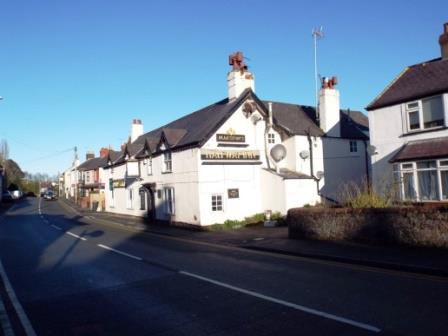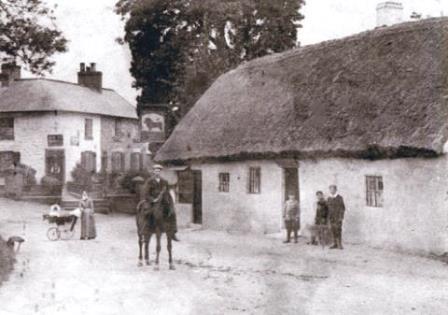 News of a planning application to convert the former Halfway Inn, Caergwrle into two dwellings has brought forth a number of nostalgic memories from local residents on social media. Residents have lamented the loss of Caergwrle’s pubs which used to play such an important part in the life of the village. For some pubs like the Halfway were their ‘spiritual home’. People have written with sadness of the changes to the character of the village. For some it was where they ‘had their first pint’, played for the darts team or socialised with some of Caergwrle’s fondly remembered characters. There is a sense of loss because conversion of the building means that it will never serve as a community hub again. It is also symptomatic of the more general decline of a traditional way of life which included the local pub as the main focal point of a village.The Halfway was, in the nineteenth century, the meeting place of one of the most important friendly societies of the village; the Independent Order of Oddfellows. They were, and still are, one of the largest friendly societies in the UK, having evolved from the medieval guilds. Friendly Societies played an important role in looking after the welfare of members before aspects of the Welfare State were developed, and there were several such Societies active in Caergwrle. Although membership would involve expense and obligation it also provided a safety net against hardship. The Societies used local public houses as meeting places, thereby adding to their custom and support in the locality. The name ‘Odd Fellows’ came into being because they were fellow tradesmen from an odd assortment of trades. Locally they are remembered by the street name of ‘Fellows Lane’ which, crosses the Packhorse Bridge, and would have been a popular route used by members walking to the Halfway. Other local pubs, which have now become private houses, were similarly sustained by friendly societies, some of which had influential support. The Derby Arms was used as a meeting place by the Ancient Order of Foresters. Their activities included an annual ‘Anchor of Hope’, which involved a procession round the area, led by the Band of the 1st Flintshire Engineers, before returning to the assembly room for a dinner. In the late ninetieth century they had 112 members, with Colonel Trevor-Roper, of Plas Teg, as their president. The Glynne Arms, now a residential care home, was the meeting place of the Loyal Order of Ancient Shepherds, who had 250 members in 1894. It was also a meeting place for the Royal Antediluvian Order of Buffaloes. Newspaper reports of the late nineteenth century make it clear that the Glynne Arms played an important part in communal life, having grounds for the erection two marquees and excellent reputation for dinners and refreshments. The cover provided allowed space for dancing to take place in the event of wet weather and there was often involvement of a military band or shooting match between different Rifle Volunteer Companies. With all this on offer it is not surprising that local pubs flourished. Sadly village pubs have been closing across Britain for decades and rural communities have been the hardest to be hit. There are several factors involved. It has been argued that local families are priced out of their own communities by wealthy commuters who lack the same attachment to local pubs and services. There is a strong argument for more affordable housing to save village life but there will always be an issue about where such housing should be permitted. Breweries place their own demands on pub landlords and the pubs themselves have difficulty competing with the low price of alcohol on supermarket shelves, especially when people have limited disposable income. When footfall declines the value of the site itself becomes an attractive opportunity for housing development. It is the old adage: if you don’t use it, you lose it.  It seems fitting to conclude with a note of optimism and to use a rare photograph to make the point. Although Hope’s Red Lion Inn will never revert to being a traditional pub with a thatched roof it is due to and as a public house and restaurant. Let us hope that the new owners have a successful future and that Hope receives a much needed lift from the new investment which the pub will be receiving.The views expressed in this article are those of the author and do not reflect the policy of Flintshire County Council. Readers are welcome to contact the author with any news or views on the local heritage at [email protected] or by telephoning 01978 761523.
0 Comments
Your comment will be posted after it is approved.
Leave a Reply. |
AuthorDave Healey Archives
December 2020
Categories |
 RSS Feed
RSS Feed